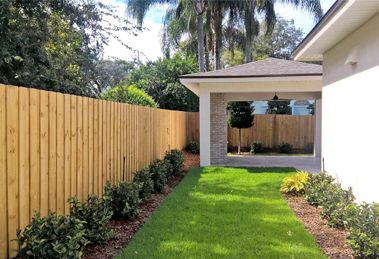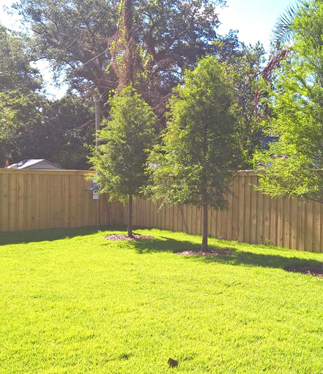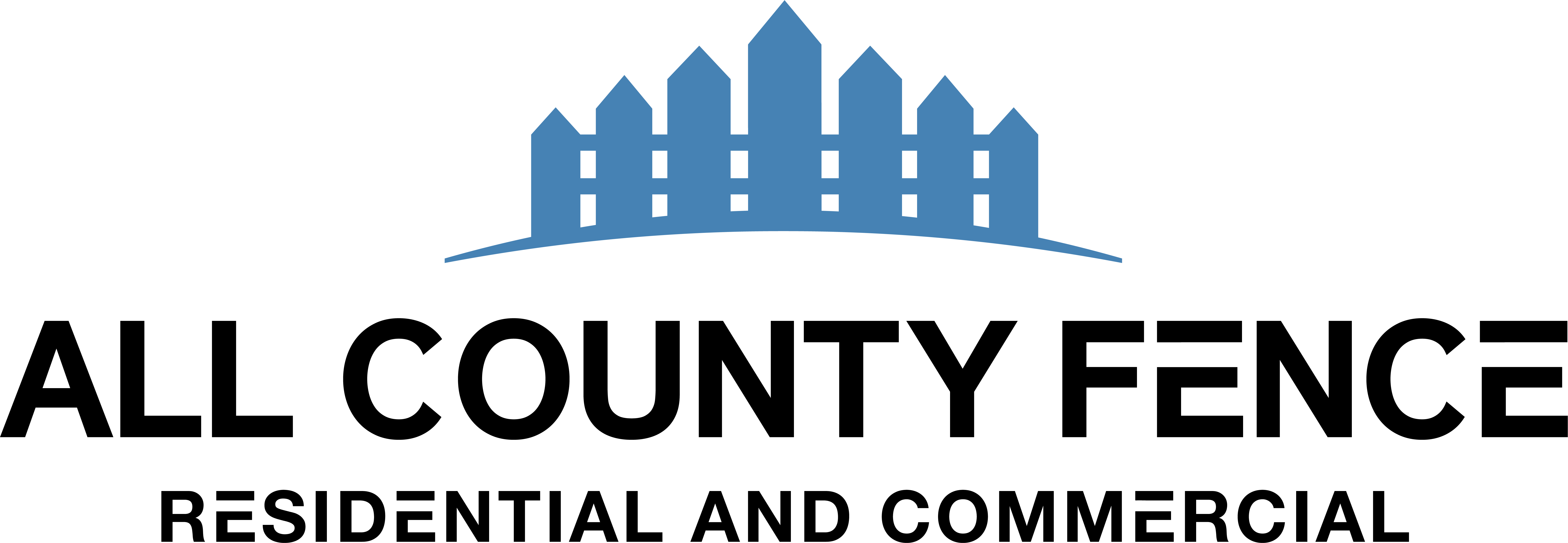Email : [email protected] | Phone : (407) 885-5520
Wood Fence Orlando
Wood has been used for fencing for centuries all around the world and is the most common material used for fencing today. Although wood fence orlando has a limited life and requires maintenance, it is often chosen over other materials, like vinyl and aluminum, because it is readily available at a relatively low cost. Wood fence panels have a classic look and feel that can’t be replaced with other types of fencing materials.
The Best Material to use in a Wood Fence
Cedar Wood Fence
Cedar can be found in a variety of wood grades. The inherent natural oils and acids make this type of wood extremely unattractive to many insects as well as a natural resistant to rot. Cedar also warps less than other softer woods used in fencing projects. On average, cedar is nearly half the cost of redwood and about 2 x the cost of pressure treated lumber.
Cypress Wood Fence
Southern Cypress or Bald Cypress is a common fence material found in the Southern US and is often used as an alternative to cedar and redwoods. Is also has a tan/red color but much lighter than redwood with all the same insect and decay resistance properties. Cypress wood can be utilized in both structural and ornamental parts of your fence. Bald Cypress is a more economical choice in the Southeast parts of the US.
Pressure-Treated Wood
Consists of mostly southern yellow pine and is often considered the least expensive wood to use for a fence (usually half the price of the wood above). Most pressure treated wood is treated with a chemical to preservative the wood and protect it rot and insects. The most common chemicals used to treat pressure treated wood include: Alkaline Copper Quaternary (ACQ), Copper Azole (CA), and, the most recent, Micronized Copper Quaternary (MCQ). Pressure treated lumber will typically last 20 years or more, and will often come with a limited lifetime warranty.
Pressure treated wood will consist of a green color that will often turn gray over the years. Above ground graded timber can be used for everything except posts and must be sealed with a repellant to protect it from the rain and other elements. Another important aspect of pressure treated wood is how it is dried. Check to see if the pressure treated wood is kiln dried or air dried. Kiln dried wood is more stable and will warp less. KDAT stamp will indicate kiln dried wood.


Wood Grade and Fence Quality
Wood is the most popular material choice for building a fence. It’s affordable and can be cut to uniform sizes and shapes. The quality and maintenance of your fence will ultimately depend on the materials and installation method that were used in its construction. The quality of the fence posts are very important because they are often the first part of your fence to fail. So now let’s talk about the quality of wood and how it’s graded.
Clear Grade Wood
– Highest-quality and most expensive grade. Limited differences in natural appearance.
Premium Grade Wood
– A great looking wood that is graded based on the uniform appearance of the sides and edges of the lumber.
Select Grade Wood
– One side is good (premium), the other side has defects.
Standard Grade Wood
– One side gets a select or premium grading. The other side has a small number of defective characteristics.
Standard & Better Grade Wood
– More defects are allowed than select or premium on one side and limited defect characteristics on the other side.
Quality Grade Wood
– This is the least expensive, economy grade wood. It will typically contain knots.
Common Types of Lumber Used for Wood Fence
Pine Fence Panels
Pressure treated for subterranean termites – besides having pressure treated pine, it is good to coat the lumber with water repellant stain to prolong the life of wood.
Spruce Fence Panels
Untreated spruce picket fences and cross rails are commonly used in prefabricated 4 x 8 or 8 x 6 ft picket and stockade-fence sections that you’ll typically see at your local hardware store. These are then installed between pressure-treated fence posts.
Cypress Fence Panels
Natural chemical Cypretine – Red Cypress is an all-natural aromatic wood that is grown in the swamps of Florida. Noted for its color consistency, density, hardness and relative lack of knots, cypress is a superior wood.
Cedar Fence Panels
This is the best wood for home fencing. It is not only beautiful but also offers more durability and a longer life. Usually higher in demand, making it more expensive.
The best and most elegant woods for fencing come from evergreen softwood which contains resins that naturally repel molds, termites and other boring insects. The best known is California redwood; the heartwood of this tree will last for 25 years or more without treatment. Redwood is often in high demand compared to other wood types because of its use in products such as siding, decks, and railings. Redwood is expensive but will tend to deteriorate in regions outside of California.
Types of Wood Fence Styles
Board on Board
This is a privacy type wood fence. In this type of fence, a third picket is placed on top of every two picket nailed together, creating a full privacy and giving extra strength to the fence. Of course this means more wood, so the fence will be more expensive.
Stockade
This is also a privacy wood fence; here the pickets are cramped together flat on rails and nailed tight against each other. But since wood bends and warps over time, you are most likely to have small gaps in between pickets. So you can say that over time, it become semi-privacy fence.
Shadowbox
In this type of wood fence, pickets are placed behind and in front of each other, creating an almost full privacy fence. There are small gaps in between the front and back pickets.
Post and Rail
This type of fence is most common in farms and other agricultural facilities. They do not have any pickets, only strong rails running along on posts. Commonly 2, 3 or 4 rails.
Picket Fence
This is the most common type of wood fence. Before any of the fancy styles or designs of fencing were thought about, wooden picket fences existed. There are mainly two types of picket fences – classicalbeing the most common one.
Classical Picket Fence
Generally 6 ft x 8 ft wide panels, with two rails, several pickets spaced out evenly and the top tip of each picket shaped pointy instead of flat.
Contemporary Picket Fence
Same size panels as the classical, 6 ft x 8 ft with two rails and several pickets. The only difference is that the top rail runs across the top line of the pickets, which are flat instead of pointy. So the top rail nails at the end of each picket and acts like a handrail.
Components of Wood Fence
Pickets
Pickets are generally rough cut and come in variety of width and depth. Most commonly available pickets are sized as follows. But if you have a specific need, you can have your sawmill cut you any size pickets you want.
Also the tips of pickets are shaped differently. You have dog-eared picket, flat tip picket, pointed picket, gothic tip pickets and French gothic tipped pickets.
• 1/2″ x 4″
• 1/2″ x 6″
• 1″ x 4″
• 1″ x 6″
Rails
Rails got to be little thicker than the pickets. Generally rails are placed on the outside/ back of the fence. For extra strength you can run rails diagonally on a segment besides running the basic horizontal rail. Rails are available in two common sizes.
• 2″ x 3″
• 2″ x 4″
Posts
The posts of your wood fence are one of the most important components. It faces the greatest danger of decomposition since it resides within the ground. In most cases, posts will begin to rot first and begin to fall. There is an old fashioned technique of avoiding the posts from rotting, which still works pretty well. The bottom of the posts is charred black on an open fire and then stuck in the ground with rock salt. This prevents the wood in the ground from rotting or at least makes the posts last longer. Most fence posts are a standard size of 4ft x 4ft x 8ft. If you have a fence taller than the standard 6ft, then you will need taller posts to go with it. In most cases one-third of the posts resides underground while two-thirds is above.
Fasteners
Since you are dealing with wood, best way to fasten the wood is nail and wood staples. Other important hardware you will need to choose is your hinges, that is if you got a gate on your fence line. There are varieties of metal hinges to choose from for wooden gates. They come in all different sizes and metal types. If you get yourself stainless steel ones, you save yourself the problem of rust. So here is a small list of parts you will need to get your fence together.
- Nails
- Ring-shank nails
- Staples
- Drop rods
- Hinges
- Latch and lock
- Level
Related Content >> Benefits of Wood Fencing
Lake County: Clermont, Eustis, Groveland, Minneola, Mount Dora, Tavares, Umatilla
Seminole County: Altamonte Springs, Casselberry, Forest City, Heathrow, Lake Mary, Lake Monroe, Longwood, Oviedo, Sanford, Wekiva Springs, Winter Springs
Orange County: Alafaya, Apopka, Bay Lake, Belle Island, Bithlo, Christmas, Doctor Phillips, Eatonville, Edgewood, Fairway Shores, Goldenrod, Gotha, Hunter’s Creek, Lake Buena Vista, Lockhart, Maitland, Meadow Woods, Oakland, Ocoee, Orlando, Orlovista, Pine Castle, Pine Hills, Southchase, South Apopka, Taft, Tangerine, Union Park, Wedgefield, Williamsburg, Windermere, Winter Garden, Winter Park, Zellwood
Osceola County: Celebration, Champions Gate, Kissimmee, Narcoossee
Volusia County: Daytona Beach, Daytona Beach Shores, DeLand, Edgewater, Ormand Beach, Port Orange
Flagler County: Bunnell, Flagler Beach, Palm Coast

